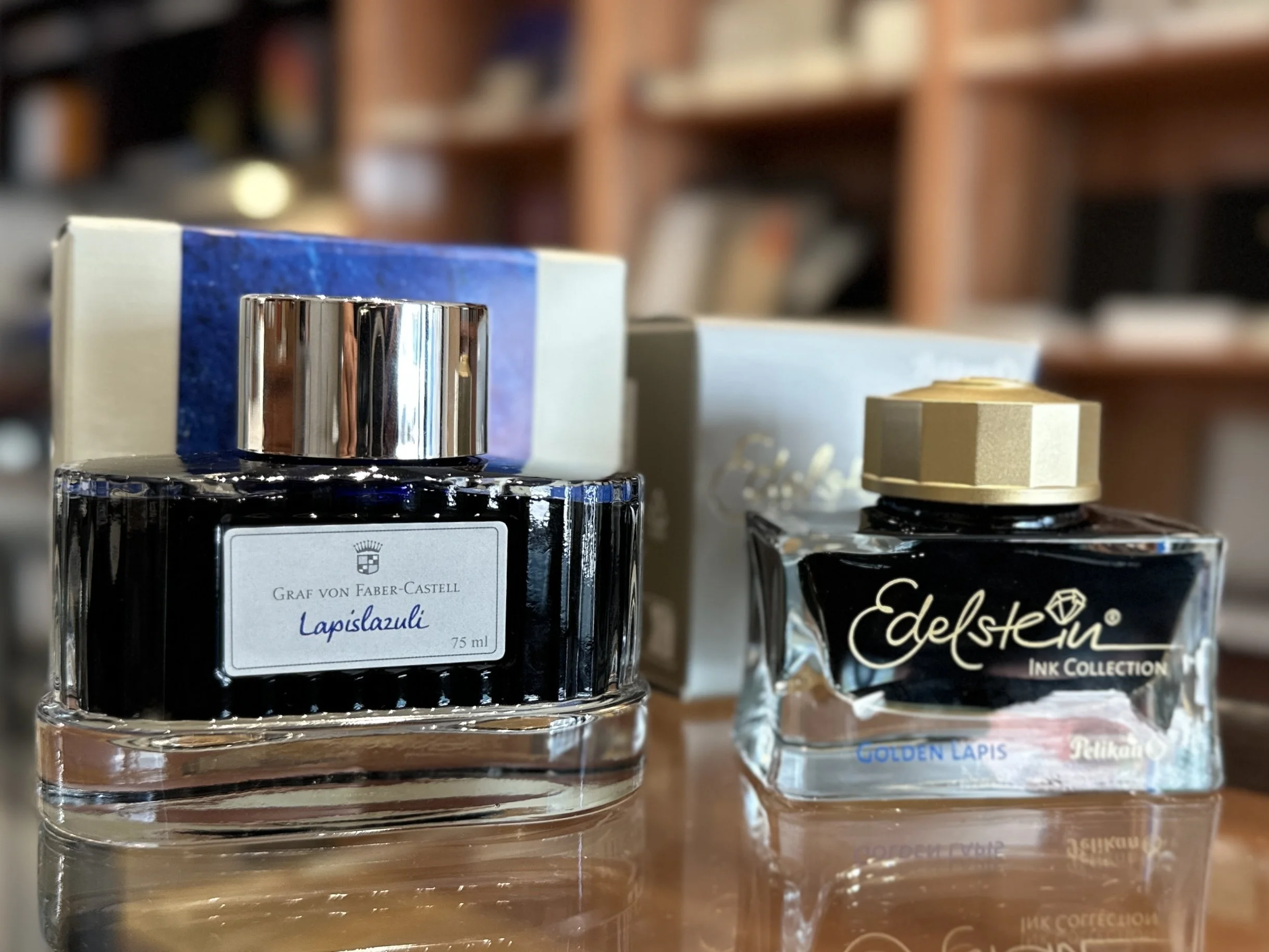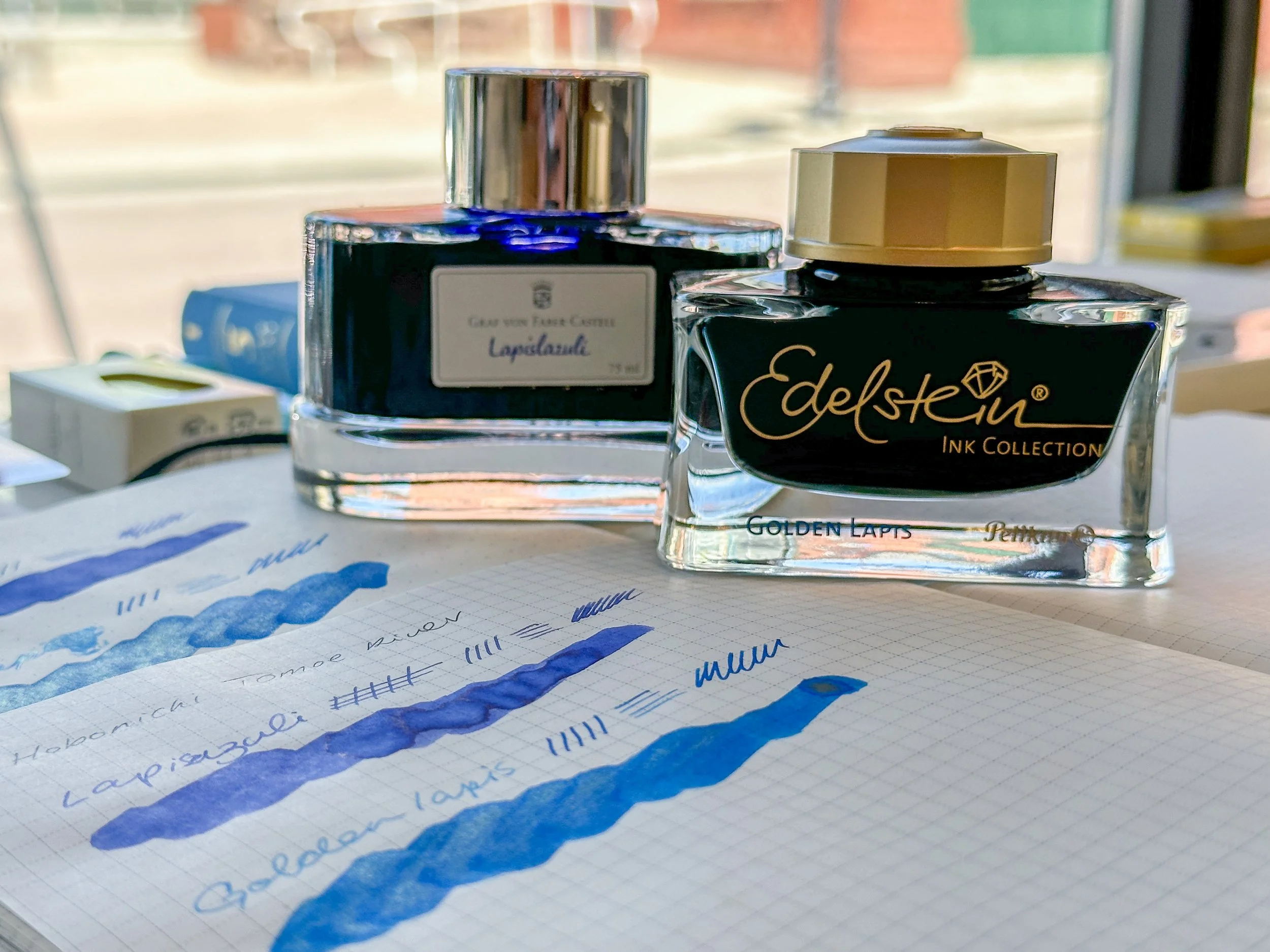Pelikan Edelstein Golden Lapis Vs Graf Von Faber Castell Lapis Lazuli: What's the difference?
Fans of blue inks, rejoice! We just received not one, but two gorgeous new inks for you to discover. The hotly anticipated, 2024 limited edition Pelikan Edelstein ink—Golden Lapis—arrived last month at our shop, alongside a brand new ink from Graf von Faber Castell—Lapis Lazuli. Both of these inks have a vibrant blue base, but when placed side-by-side, they actually look quite different. Let’s see how they compare!
One major difference you can expect is that Pelikan’s Golden Lapis is a shimmer ink. You’ll need to gently agitate your bottle or pen before writing for its full effect! Once it dries, the golden shimmer is spectacular. In addition, these two inks are actually very different shades of blue! Graf von Faber Casetll’s Lapis Lazuli is a dark blue that is perfect for everyday writing, while Golden Lapis is a brighter, more turquoise shade that would look stunning for letters and cards.
We decided to make our swatches by creating a saturated, wet pass of the ink with a cotton swab, and then a more realistic writing sample with a fine dip pen. Our paper choices really came down to the some of the most popular choices we see sold: Tomoe River paper (from a Hobonichi Memo Pad), Leuchtturm’s 120 gsm paper, and the classic cream Midori MD cotton paper.


On the Tomoe River paper, the swatches took a longer time to dry—as is usually expected with this paper. Once dried, however, it showed the most shading, especially in the Lapis Lazuli! There was also a sheen to Lapis Lazuli that we couldn’t replicate on other papers.
Of the three papers, the Leuchttrum1917 120 gsm stock buckled the most when ink was applied with the cotton swab, but the paper did dry evenly. The colour swatch appeared most even on this paper but the shimmer seemed to lift the most on this paper once dried. So if you brush Golden Lapis with your fingers, be forewarned—they will be covered in micro shimmer. The other samples had minimal shimmer lift in comparison.
The Midori MD cotton paper made for the darkest Golden Lapis swatch. Lapis Lazuli was more muted on this paper, perhaps due to the cotton paper. On the other hand, the inks also seemed to dry the quickest with this paper!
It was really interesting to see how these colours reacted to different papers, we definitely recommend trying it with your own ink collections!
What do you think of these two inks? Was there an ultimate winner? After all that testing, we think the Pelikan Edelstein Golden Lapis is more enticing, but that may just be because of its refreshing hue, reminding us of the upcoming summer. We hope you give them a try!


